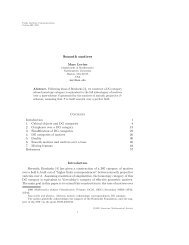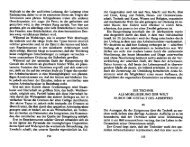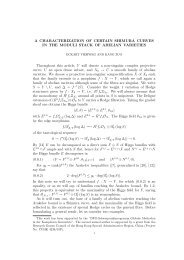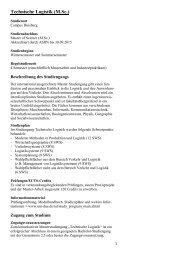AVR STK500 User Guide - Atmel
AVR STK500 User Guide - Atmel
AVR STK500 User Guide - Atmel
Create successful ePaper yourself
Turn your PDF publications into a flip-book with our unique Google optimized e-Paper software.
Hardware Description<br />
3.7.1 ISP Programming In-System Programming uses the <strong>AVR</strong> internal SPI (Serial Peripheral Interface) to<br />
download code into the Flash and EEPROM memory of the <strong>AVR</strong>. ISP programming<br />
requires only VCC , GND, RESET and three signal lines for programming. All <strong>AVR</strong><br />
devices except AT90C8534, ATtiny11 and ATtiny28 can be ISP programmed. The <strong>AVR</strong><br />
can be programmed at the normal operating voltage, normally 2.7 - 6.0V. No high-voltage<br />
signals are required. The ISP programmer can program both the internal Flash and<br />
EEPROM. It also programs fuse bits for selecting clock options, start-up time and internal<br />
Brown-out Detector (BOD) for most devices.<br />
High-voltage programming can also program devices that are not supported by ISP programming.<br />
Some devices require High-voltage Programming for programming certain<br />
fuse bits. See the High-voltage Programming section on page 3-11 for instructions on<br />
how to use High-voltage Programming.<br />
Because the programming interface is placed on different pins from part to part, three<br />
programming headers are used to route the programming signals to the correct pins. A<br />
6-wire cable is supplied for connecting the ISP signals to the target ISP header. A color<br />
coding system and a number system are used to explain which target ISP header is<br />
used for each socket.<br />
During ISP programming, the 6-wire cable must always be connected to the header<br />
marked “ISP6PIN”. When programming parts in the blue sockets, connect the other end<br />
of the cable to the blue SPROG1 target ISP header. When programming parts in the<br />
green socket, use the green SPROG2 target ISP header. And when programming parts<br />
in the red sockets, use the red SPROG3 target ISP header.Table 3-2 shows which<br />
socket suits which <strong>AVR</strong> device, and which SPROG target ISP header to use for ISP<br />
programming.<br />
The 6-wire cables should be connected directly from the ISP6PIN header to the correct<br />
SPROG target ISP header. The cable should not be twisted. A colored wire on the cable<br />
indicates pin 1. Confirm that this is connected to pin 1 on each of the headers.<br />
When programming 8-pin devices, note the following: Pin 1 is used both as RESET and<br />
as PB5 on some devices (ATtiny11, ATtiny12 and ATtiny15). Pin 1 on the 8-pin sockets<br />
SCKT3400D1 and SCKT3400D1 are connected to PB5. The RESET signal used during<br />
ISP programming is therefore not connected to pin 1 on these sockets. This signal must<br />
be connected by placing a wire between RST and the PORTE header and PB5 on the<br />
PORTB header.<br />
<strong>AVR</strong> <strong>STK500</strong> <strong>User</strong> <strong>Guide</strong> 3-9<br />
1925C–<strong>AVR</strong>–3/03

















